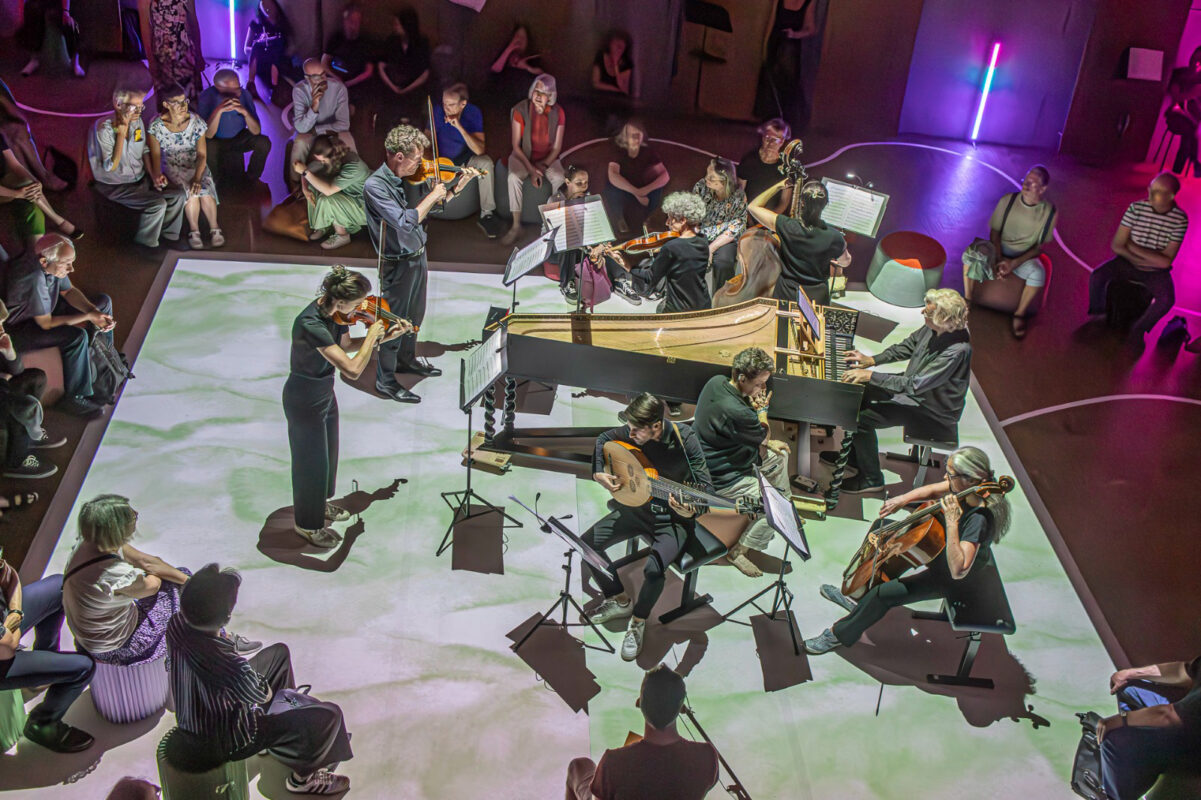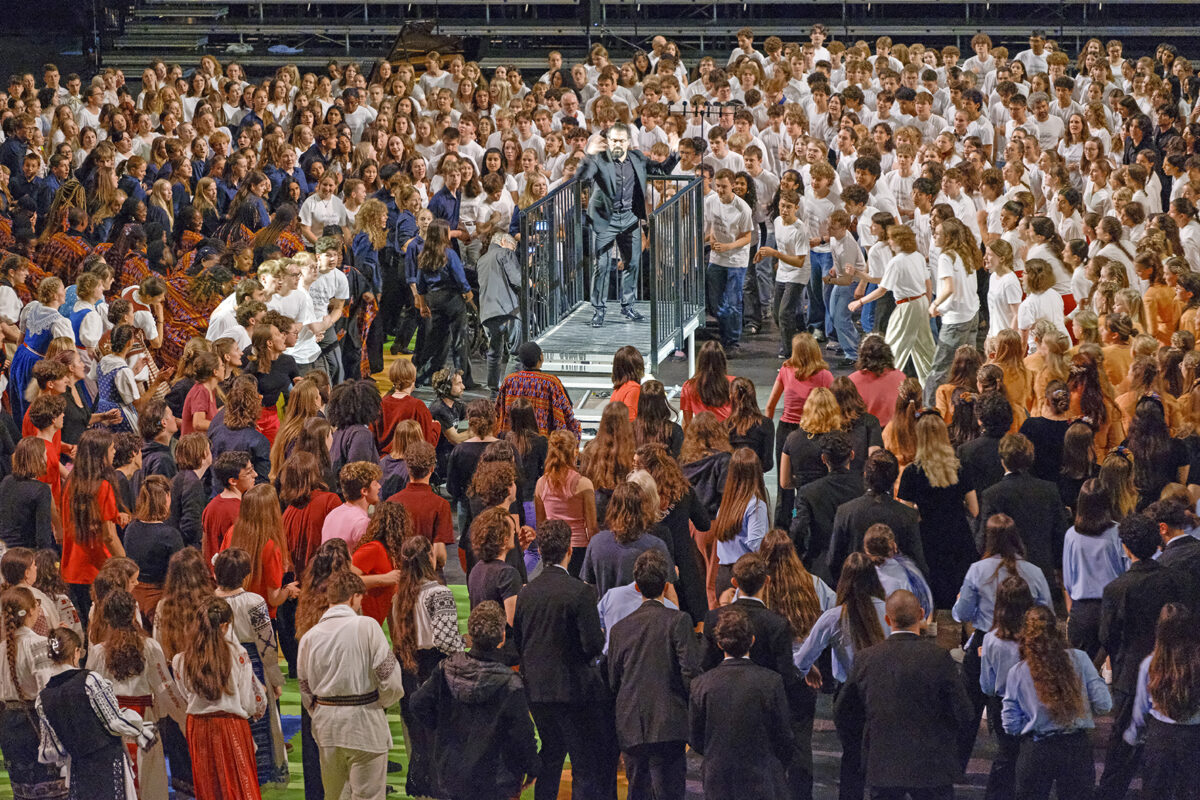Music for Mario Botta's "Stone Flower"
A spatial sound composition by Francesco Hoch was premiered on Monte Generoso.
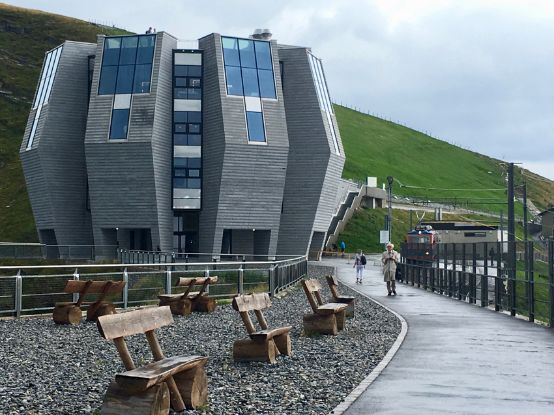
Ever since Iannis Xenakis created the spatial sound composition Concret PH for 425 loudspeakers and John Cage's random sounds for American art galleries in the 1960s, countless experiments have been carried out with the aim of creating a meaningful relationship between music and architecture. Some with strategic planning such as the Music for a housewhich Stockhausen staged with fourteen assistant composers in Darmstadt in 1968, some rather casually and on an improvisational basis. "Making space acoustically tangible" is the all-encompassing formula. It implies that the composition renounces autonomous laws and tends towards "musique d'ameublement", as Erik Satie once ambiguously put it. The musical performance approaches the sound installation, and for the audience, situational perception takes precedence over structural or semantically related musical listening. In the case of half-baked concepts, this can end in banalities, but it can also lead to enlightening results.
Musical coloring
The latter was the case with the sound event that Francesco Hoch performed on the last Saturday in August at a lofty height of 1700 meters above sea level on Monte Generoso. This was not only due to the carefully conceived music, but also to the architectural object to which the composition was functionally tailored: the "Fiore di pietra" (Stone Flower) building by architect Mario Botta. The ambitiously designed new mountain station of the cog railway with panoramic restaurant, exhibition and conference rooms was inaugurated last year and has since attracted excursionists, hikers and architecture enthusiasts from all directions.
-
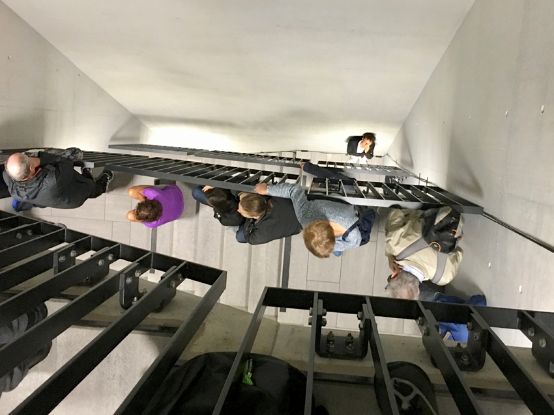
View from above into the depths of the sound space. Photo: Max Nyffeler
In addition to an elevator, the four floors of the spherical building are connected by an artfully angled, daylight-bright staircase that opens up to the usable spaces in a variety of ways and constantly opens up new perspectives both inside and out. This visually and acoustically equally inspiring ambience was now the setting for the Colorazione musicale per il Fiore di pietrathe "musical coloring of the stone flower", as Francesco Hoch called his music. The sound action lasted half an hour and was repeated three times that afternoon.
Walkable layers of sound
The eight musicians required for the piece were distributed in pairs across the four floors: the low instruments cello and bassoon at the bottom by the entrance, oboe and piccolo at the top and the "middle" instruments violin, flute, clarinet and cor anglais in between. The staircase is separated from the outer wall on one side by a space around one and a half meters wide, which not only allows a view from top to bottom, but also creates the conditions for the sound to mix easily in the vertical. Thanks to this spatial permeability, the eight voices merged into a common sound sculpture that varies depending on the location. Walking up and down the four floors, you could experience how the horizontal layers of sound alternately came to the fore and then disappeared again in the overall sound, and anyone sitting down in one of the adjacent rooms perceived a kind of static distant sound that was only constantly changing in its inner structure.
-
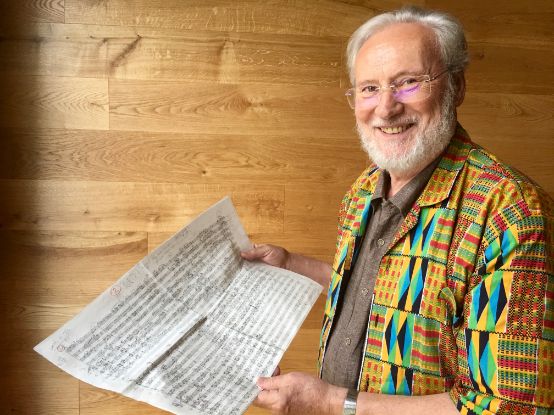
Francesco Hoch with his score. Photo: Max Nyffeler
The composer had worked out a precise score for the eight performers. As is usual in such spatial sound experiments, the material is simply structured: short melodic phrases, mostly scale components or repetitive patterns that constantly change and form a kaleidoscope-like whole. However, durations and entries are precisely defined in the score, so that the overall course is formally structured; during the performance, coordination across the four floors was ensured by a click track. The half-hour composition is divided into three ten-minute parts according to the A-B-A' pattern. The parts with Petalo (petal), which form the compact frame, differ in their opposing dynamics and density ratios, and in their internal structural progressions they emulate the blossom-like forms of Botta's stone flower. In the three-part large form, the composition could perhaps be compared to a blossom that slowly closes and opens again.
-
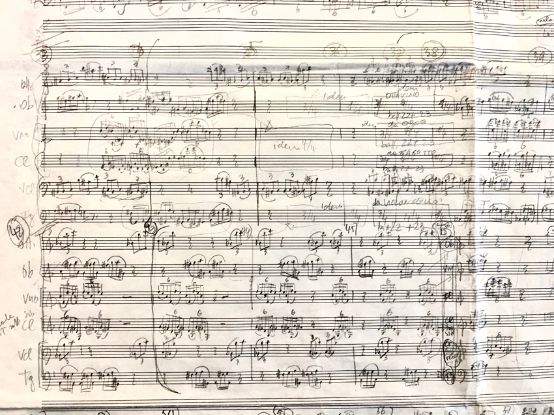
Excerpt from the score by Francesco Hoch. Photo: Max Nyffeler
Shaped past
The three performances were followed by a panel discussion that focused neither on musical nor architectural issues, but on shared biographical experiences. The participants were all born in 1943, the same year as Francesco Hoch, and therefore 75 years old: a lawyer, a musician, a writer, a surgeon, a painter and the composer - all from Ticino. The only one missing was Mario Botta, who was currently in St. Petersburg. A generation that was actively involved in shaping the post-war decades from different perspectives and in very different fields looked back in an intelligent and inspiring way.






